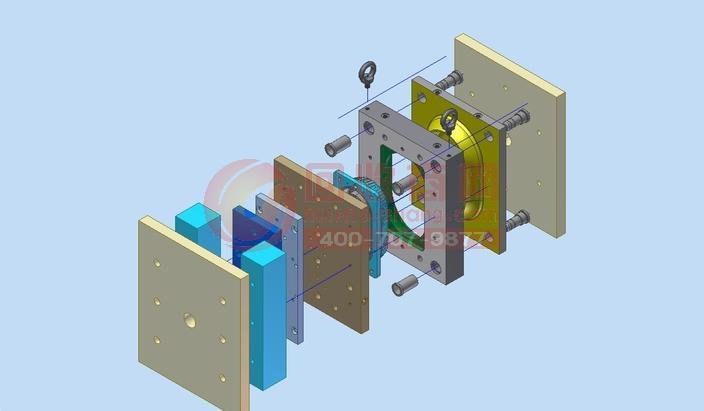
The temperature of the injection mold has a great influence on the filling flow, curing setting, production efficiency and shape and dimensional accuracy of the plastic melt.
Each plastic injection molding has a reasonable mold temperature area, so that the fluidity of the melt is easy to fill the cavity, the shrinkage and warpage of the plastic parts after demolding are small, the size is stable, and the mechanical properties and surface quality are also high. In order to control the temperature of the mold, it is necessary to design a temperature adjustment system, generally using a mold cooling or heating method, if necessary, both.
First, the necessity of temperature regulation
The mold temperature has a great influence on the molding quality and molding efficiency of the rubber parts. In the mold with higher temperature, the fluidity of the molten rubber is better, which is beneficial to the filling of the cavity of the rubber material, and obtains the appearance surface of the high-quality rubber parts, but the curing time of the rubber material becomes longer, and the deformation is easy when it is ejected. For the crystalline rubber compound, it is more favorable for the crystallization process to avoid the change of the size of the rubber parts during storage and use; in the mold with lower temperature, the molten rubber is difficult to fill the cavity, resulting in an increase in internal stress and a matte surface. Produces defects such as silver streaks and weld lines.
Different rubber compounds have different processing techniques, and the surface requirements and structures of various rubber parts are different. In order to produce the rubber parts that meet the quality requirements in the most effective time, the molds are required to maintain a certain temperature and mold temperature. The more stable, the more consistent the requirements for the size and shape of the rubber parts produced and the appearance quality of the rubber parts. Therefore, in addition to the factors in mold manufacturing, the mold temperature is an important factor in controlling the quality of the rubber parts. The mold temperature should be fully considered in the mold design.
Second, the principle of mold temperature control
In order to ensure the production of high-quality, high-quality, dimensionally stable, and low-profile rubber parts in the most efficient time, the basic principles of mold temperature control should be clearly understood during design.
1. Different rubber compounds require different mold temperatures.
2. Different surface quality, different structure of the mold requires different mold temperatures, which requires specificity in the design of the temperature control system.
3. The front mold temperature above the mold temperature, the temperature difference is approximately 20 ~ 30o under normal circumstances.
4. The front mold temperature required for the fire pattern is higher than the front mold temperature required for the general smooth surface. When the current mold is required to pass hot water or hot oil, the general temperature difference is about 40o.
5. When the actual mold temperature can not reach the required mold temperature, the mold should be heated. Therefore, the mold design should fully consider whether the heat brought into the mold can meet the mold temperature requirements.
6. the compound into the mold by heat in addition to heat radiation, heat conduction mode consumes, the vast majority of the heat required to bring out of the mold by a heat transfer medium is circulated.
Third, the mold temperature control method
The mold temperature is generally controlled by adjusting the temperature of the heat transfer medium and adding a heat insulating plate and a heating rod. The heat transfer medium generally uses water, oil, etc., and its passage is often referred to as a cooling water passage.
1. Reduce the mold temperature
Generally, the front mold is connected to "machine water" (about 20oC), and the rear mold is connected to "frozen water" (about 4oC). When the passage of the heat transfer medium, that is, the cooling water channel cannot pass through certain parts, the material with high heat transfer efficiency should be used to transfer heat to the heat transfer medium, or the "heat pipe" is used for local cooling.
2. Increase the mold temperature
It is generally achieved by introducing hot water and hot oil (heating machine heating) into the cooling water channel. When the mold temperature requirement is high, in order to prevent the heat loss from heat loss, the heat insulation board should be added to the mold panel.
In the hot runner mold, the temperature of the runner plate is high, and it must be heated by the heating rod. In order to avoid the heat transfer of the runner plate to the front mold, the front mold is difficult to cool, and the contact surface with the front mold should be minimized during design.
Four Axis Machining Service,Five Axis Machining,Four Axis Machining,Five Axis Machining Service
Lizhi Precision Manufacturing Technology Co.,Ltd , https://www.lizhipartsmfg.com